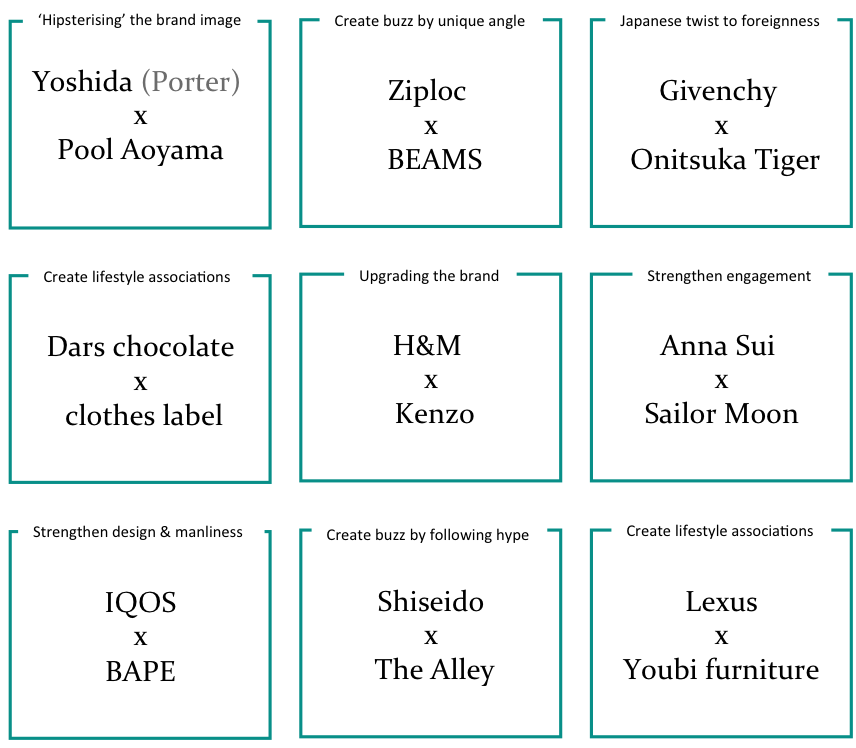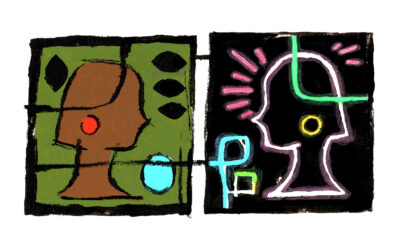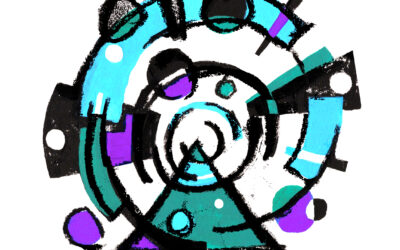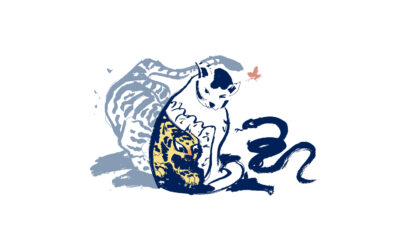Japanese consumers are particularly fastidious. They are highly self-conscious about what any given consumption choice tells others about themselves. They identify themselves as part of certain lifestyle tribes or kei (系) from which it is possible to guess at their preferred colour codes, brands and styles; and from there what and whom they are likely to be reading, listening to and following.
Brands in Japan understand this key dynamic and consumption driver very well. As a result, they turn to collaborations or collabo seen far more rarely elsewhere, which situate them even more deeply and coherently within these clearly defined consumer lifestyle groupings. Whether selling notebooks, kitchen scales or sushi, these collaborations have been highly successful over the past decade at attracting and retaining their targeted consumers.

Social media has amplified the speed at which attention is gained, but perhaps more importantly the speed at which new collaborations appear. Limited edition products are the norm. Just within the top 100 gaming app titles, there have been more than two hundred annual tie-ups.
Looking in more detail at the process, there are four main routes that brands take: combining with a celebrity, with a character or kyara, with another brand or with a designer/label. The greatest success stories create buzz not just by wielding their partner’s brand power but by creating an extra, new appeal.
For example, in 2018 BEAMS collaborated with Ziploc to launch PVc fashionwear that included caps, backpacks and aprons. Social media was confused at what initially seemed an ironic joke, with Twitter full of comments such as “あれ本当に存在するんだ…ネタかと思ってた (It actually exists… I thought it was for jokes)”. And yet ultimately the highly approachable collabo caught not only a fashion moment but a trend for upcycling. The concept managed to combine familiarity with ‘out of the box’ thinking, and it was widely praised as unusually thoughtful.

Another highly successful collabo was the 2019 ArtistarMake release by Shiseido – ‘the’ Japanese skincare brand – and The Alley, a leading Taiwanese tea shop with a huge following amongst the young for its tapioca drinks. The novelty of the combination of cosmetics and tapioca, the Instagrammability of the products ensured that both brands’ values and customer bases were highly leveraged.

Allowing customers to create a story was the path chosen by another tea brand. Gogo Tea produced a collaborative series with Pocky in which each edition had a different theme, allowing customers to connect the Gogo Tea and Pocky packages to create a story: perhaps a scene of friendship or love, with the two products being eaten together to create a specific flavour.

The fifth in the series, called ‘Youthful Memories of the Heisei Era’ (平成の青春), was particularly popular, however, because of its thoughtful collaboration with Wamizu, an illustrator with a soft and nostalgic style which fit perfectly the underlying purpose of the project. His accuracy in depicting clothing and pastimes was also much lauded: as a native of Heisei, Wamizu was particularly well-qualified to know what would appeal to other Heiseites. As JR West Japan put it, it was ‘a style rich in feeling and flows into the hearts of Japanese people (日本人の心深くにすべり込んでくるその情感豊かな画風).

↑ From left to right, collaborations with: Jean-Michel Basquiat, Keith Haring, FUTURA, STASH, KAWS, nendo, KOSUKE KAWAMURA
Finally, no article on collaboration would be complete without mentioning BE@RBRICK, an iconic series of bears created by the Japanese company, MediComToys. These bears are essentially toys, inspired by cartoonish, robotic, futuristic styles, but have gone for up to US$160,000 at auctions or been featured in runway shows. They are artistic collaborations in which designers must work to show their individuality within the confines of the unique bear shape. It has become an opportunity eagerly sought by many designers and labels: a creative challenge within a limiting form.



